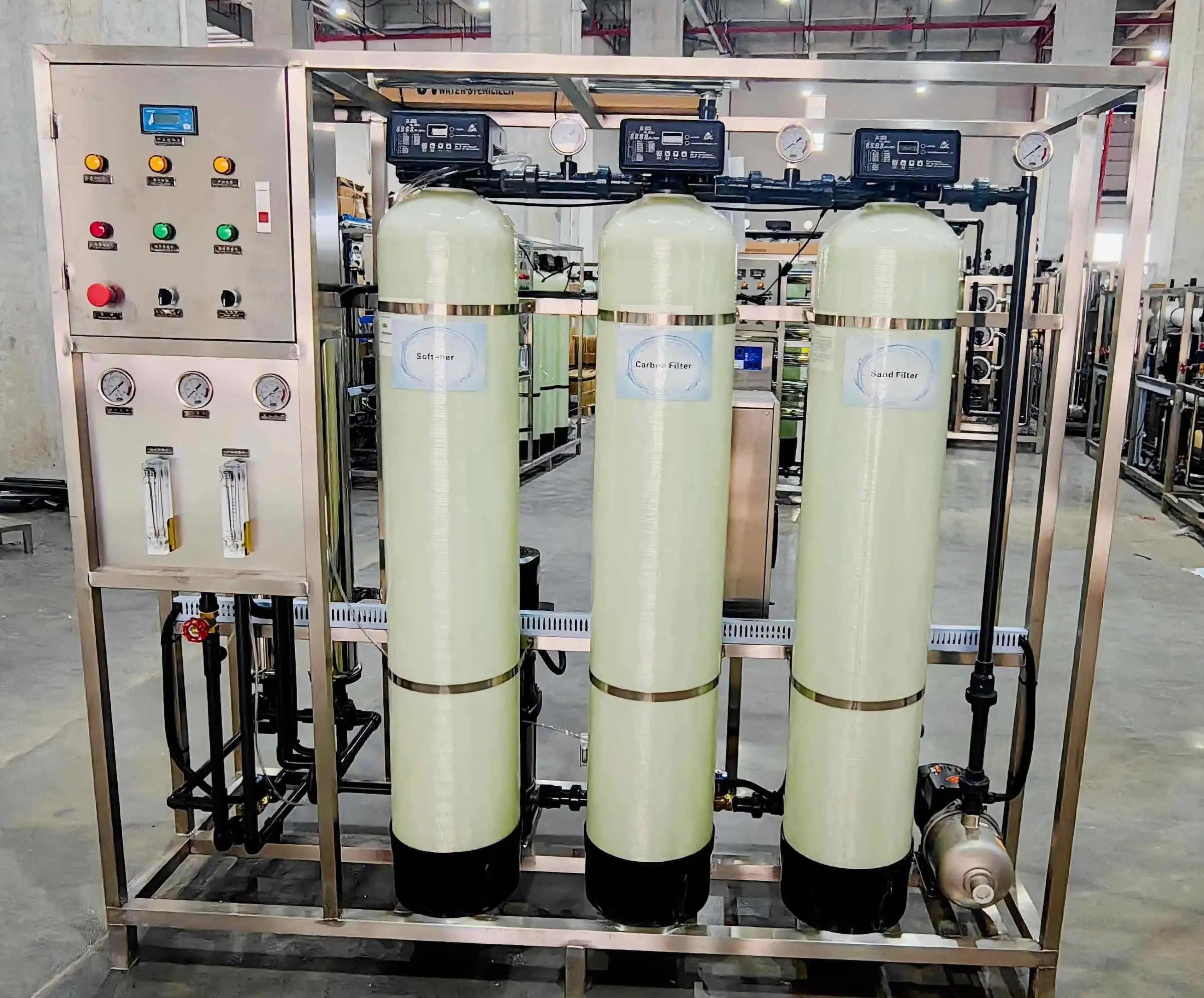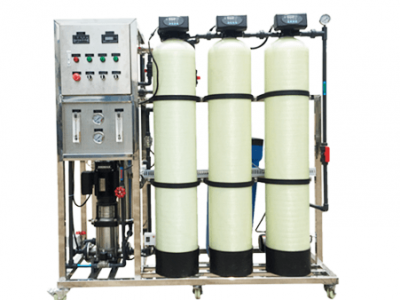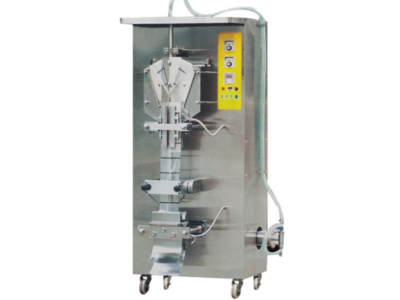Feeling lost trying to find the right water treatment system? The technical jargon is confusing, and making the wrong choice is expensive. I’m here to make it simple for you.
From my experience, selecting the right 500LPH RO system means you must first test your raw water. Then, you need to match the system’s materials and components to that water report. Finally, choose a reliable supplier who offers strong technical support and after-sales service.
Choosing the right system is a big decision, but it doesn’t have to be a difficult one. Let’s break down exactly what you need to look for, step by step, so you can invest with confidence.
What Are the Key Factors to Consider When Choosing a 500LPH RO System?
Worried about picking a system that won’t last or won’t work? It’s a common fear for new buyers. I’ll show you the essential factors to check for a successful purchase.
I always tell my clients, like Sydney from Angola, to focus on three key things. First, get a detailed raw water analysis. Second, check the quality of essential components like the RO membrane and high-pressure pump. Third, make sure the system design matches your specific business needs.
Before we even talk about machines, we must talk about your water. The single biggest mistake a new buyer can make is ordering a standard machine without knowing the quality of their source water. Your water is unique. It has a specific chemical makeup that determines exactly how it needs to be treated. Sending a water sample to a local lab is the most important first step. This gives you a raw water analysis report. This report is the blueprint for designing your system. A good supplier will always ask for this report before giving you a quotation. If they don’t ask for it, that is a big red flag.
Understanding Your Raw Water Report
The report tells us several key things. It measures Total Dissolved Solids (TDS), which is the total amount of minerals, salts, and metals dissolved in the water. It also tells us the levels of hardness, iron, manganese, and other contaminants. For example, if your water has high hardness, you will need a water softener as part of the pre-treatment. Without the softener, the calcium and magnesium will quickly block, or “foul,” the reverse osmosis membranes. This means you will have to replace your membranes very frequently, which is very expensive and stops your production. Similarly, high levels of iron require a special iron removal filter. The choice of materials for the system also depends on this report. For low TDS water, we might use pipes made of UPVC. But for high TDS or seawater, we must use more durable materials that resist corrosion, like stainless steel 316.
Here is a simple table showing how different water quality issues affect the system design:
| Water Quality Issue |
Potential Problem |
Required Solution |
| High Hardness (Calcium & Magnesium) |
RO membrane scaling, reduced efficiency |
Water Softener |
| High Iron/Manganese |
Membrane fouling, bad taste/color |
Iron & Manganese Removal Filter |
| High Turbidity (Suspended Solids) |
Clogs pre-filters and membranes |
Multi-Media Filter (Sand Filter) |
| High Chlorine |
Damages RO membranes |
Activated Carbon Filter |
| High TDS (e.g., Brackish Water) |
Requires higher pressure to treat |
Higher-pressure pump, specific membranes |
Core Component Checklist
Once we understand the water, we can look at the machine’s components. Not all RO systems are created equal. Two systems can both be rated for 500 liters per hour (LPH), but their quality and performance can be very different. The most important parts are the RO membranes and the high-pressure pump. The membranes do the actual purification, so their quality is critical. Famous brands from the USA or Japan often have a longer life and better performance. The high-pressure pump is the heart of the system; it creates the pressure needed for reverse osmosis to work. A good pump is efficient and reliable. A cheap, low-quality pump will use more electricity and break down sooner. I always advise my clients to invest in a system with a reliable pump, as it saves them a lot of money and headaches in the long run.
Matching the System to Your Business
Finally, the system must be right for your specific business. If you are starting a bottled water business like Sydney, you will need more than just the RO machine. You will need post-treatment, like a UV sterilizer or an ozone generator, to make sure the water is completely safe for drinking and has a good shelf life. You will also need connections for a bottle filling machine. However, if the water is for an industrial process, like in a factory, the requirements might be different. Maybe you need a specific water purity level, or the system needs to run 24 hours a day. You should also consider the level of automation. A fully automatic system with PLC controls will cost more initially but requires less manual work to operate and monitor. A manual system is cheaper but requires an operator to be present to start, stop, and flush the system. For a new business owner, a semi-automatic system is often a good balance between cost and convenience.
How Can You Evaluate the Quality and Reliability of a 500LPH RO System Supplier?
Are you afraid of dealing with a supplier who disappears after you’ve paid? This is a huge risk in international trade. Let me share how I prove my reliability to clients.
I believe the best way to evaluate a supplier is to check their experience and ask for case studies. You should also verify their quality control process and see if they offer clear, professional communication. A good supplier answers your questions patiently and provides detailed technical information.
Finding a good supplier, especially from another country like China, can feel like a gamble. Many websites show beautiful pictures, but the reality can be very different. You are not just buying a machine; you are starting a relationship with the company that builds it. You need to trust that they will deliver what they promise and support you if things go wrong. From my years of exporting to Africa, I have learned that trust is built on proof, not just promises. When a new client like Sydney contacts me on WhatsApp, he wants to know if I am a real expert and if my company is legitimate. It’s my job to show him that we are.
Verifying Supplier Experience
A reliable supplier will have a long history of making and exporting water treatment equipment. Don’t be afraid to ask for proof. You can ask for photos and videos of their factory. Better yet, visit factory to talk with them so they can walk you through their workshop. This is something I offer all my potential clients. It shows them we are a real manufacturer with real facilities. You should also ask for case studies or references from your country or region. If a supplier says they have exported to Angola, ask for pictures of the machines they sent there or even for contact information of a previous client (with their permission, of course). Seeing that a supplier has successfully helped other businesses like yours is a very strong sign of their capability.
A Deep Dive into Quality Control
Quality is not an accident. It is the result of a careful and consistent process. A professional supplier must have a strict quality control (QC) system. This system should cover every stage, from when the raw materials arrive at the factory to the final test before the machine is packed for shipping. I always explain our QC process to my clients so they know what to expect. It involves several key checks. First, we inspect all incoming components like pumps, membranes, and valves to ensure they meet our standards. Second, during assembly, our engineers check the work at each step. Finally, and most importantly, every single RO system is fully tested before it leaves our factory. We run the machine for several hours. We test the water output to make sure it meets the required purity. We perform a high-pressure test to check for any leaks. We take photos and videos of this entire testing process and send them to the client for their approval before we arrange shipment. This gives them peace of mind.
Here is a checklist you can use to ask a supplier about their quality control process:
| Quality Control Stage |
Key Questions to Ask the Supplier |
What to Look For in the Answer |
| 1. Raw Materials |
Do you inspect incoming components? How? |
Yes, they should check brands, models, and for any physical damage. |
| 2. During Production |
Do you have quality checks during assembly? |
Yes, they should have supervisors checking welding, wiring, and assembly. |
| 3. Final Testing |
Do you test every machine before shipping? |
Yes, every single machine must be tested. Ask for a test report. |
| 4. Proof of Testing |
Can you provide a video of my machine being tested? |
A good supplier will happily provide a video of the pressure and water test. |
The Power of Professional Communication
The way a supplier communicates with you tells you a lot about their company. Think about your pain points. You are tired of sales reps who don’t understand the products. A professional salesperson should be more like a technical consultant. They should ask you many questions to understand your needs before they recommend a solution. Their replies should be clear, detailed, and prompt. When you ask a technical question, they should give you a confident and correct answer, not “I need to check with my engineer” every time. I make sure my team and I can answer questions about water chemistry, system design, and troubleshooting directly. This builds trust and makes the whole process more efficient, which is very important for a busy business owner like Sydney. A detailed quotation that lists every component, its brand, and its price is also a sign of a professional and transparent supplier.
What Are the Common Mistakes to Avoid When Purchasing a 500LPH RO System From China?
Is the low price from a Chinese supplier too good to be true? Sometimes, it is. I’ve seen many first-time buyers make costly mistakes that I want to help you avoid.
The biggest mistake I see is focusing only on the initial price. Buyers often forget to consider the total cost, which includes shipping, repairs, and spare parts. Another common error is failing to clearly define their requirements, leading to a system that doesn’t meet their needs.
Many business owners searching on Google or Alibaba are naturally attracted to the lowest price. It is understandable, especially when you are starting a new business and want to control your costs. However, in the world of industrial equipment, the cheapest option is often the most expensive one in the long run. I have had customers come to me after buying a cheap system from another supplier that failed after only a few months. They lost money on the bad machine, they lost business because they couldn’t produce water, and then they had to spend more money to buy a proper system from us. It is a painful lesson. My goal is to help you avoid this by understanding the true cost of a machine and other common pitfalls.
Looking Beyond the Price Tag
You need to think about the Total Cost of Ownership (TCO), not just the purchase price. The TCO includes the initial cost, plus all the money you will spend to operate and maintain the machine over its lifetime. A cheap machine often uses low-quality components. The high-pressure pump might be inefficient, using more electricity every hour and increasing your bills. The RO membranes might be from a no-name brand and need to be replaced every year instead of every two or three years. The frame might be made from low-grade stainless steel that rusts quickly. These small, hidden costs add up over time and can turn a “cheap” machine into a very expensive problem. When you get a quote, don’t just look at the final number. Look at the brand and model of the key components. A slightly more expensive machine with a reliable pump and high-quality membranes will almost always have a lower TCO.
Here is a simple comparison of the potential 5-year cost for a cheap system versus a quality system:
| Cost Item |
Cheap 500LPH RO System |
Quality 500LPH RO System |
| Initial Purchase Price |
$2,000 |
$3,500 |
| Electricity Cost (5 years) |
$3,000 (less efficient pump) |
$2,200 (high-efficiency pump) |
| RO Membrane Replacement |
$1,200 (replace 4 times) |
$600 (replace 2 times) |
| Other Spare Parts & Repairs |
$800 |
$200 |
| Total 5-Year Cost |
**$7,000** |
$6,500 |
As you can see, the “cheaper” machine actually costs more over time.
The Danger of Vague Requirements
Another very common mistake is not giving the supplier enough information. If you just ask for a “500LPH RO system,” a supplier might quote you their most basic, standard model. But this model may not be right for your water, your business, or your country. You must be very specific about your needs. I always ask my clients for some key details. What is your raw water source (tap water, well water, river water)? What will you use the purified water for? Where will the machine be installed? What is the power supply available at your location (voltage, frequency, and phase)? I once had a client who forgot to tell me his factory used a different voltage. It caused a big delay because the pump motor had to be changed. Providing clear and detailed requirements from the beginning ensures that you get an accurate quotation for a machine that will work perfectly for you.
Ignoring After-Sales Support
What happens after the machine arrives? This is a critical question that many first-time buyers forget to ask. A machine is a long-term investment. You need a supplier who will be there to support you after the sale. Before you buy, you must ask about their after-sales service policy. What is the warranty period? What does the warranty cover? If a part breaks, can they supply a replacement quickly? Do they provide technical support for installation and troubleshooting? Because my clients are far away in Africa, we have provided online support. We create detailed installation videos and manuals. We are available on WhatsApp for video calls to guide our clients through any problems. We also promise to stock all necessary spare parts and can ship them quickly. A supplier who cannot offer strong after-sales support is not a good long-term partner.
Conclusion
Choosing the right 500LPH RO system is simple. Focus on your water quality, vet your supplier thoroughly, and think about long-term value, not just the initial cheap price.




